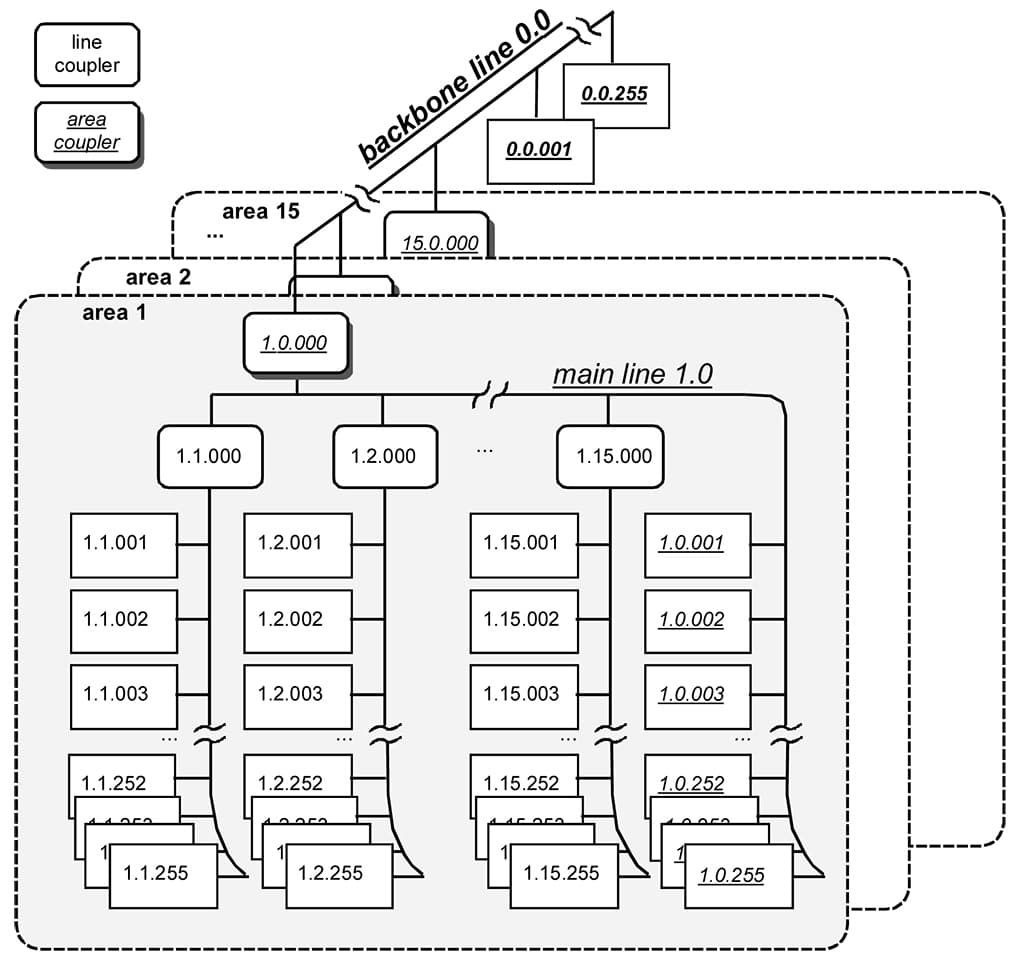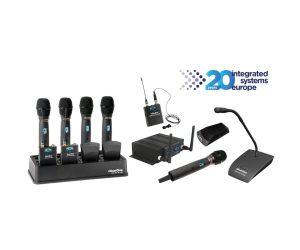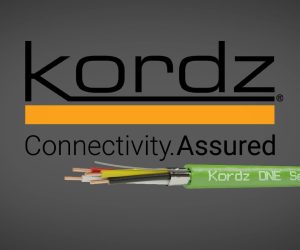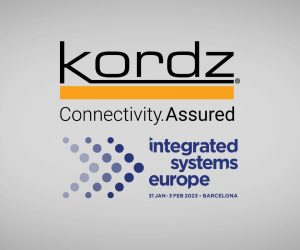KNX Building Control Protocol
Is there a new control protocol in your future?
Tutorial:/ Andy Ciddor
Standards, as we know, are a good thing, especially as there are just so many to choose from. Network standards are usually a really good thing, offering the hope of a utopia where devices of all kinds from disparate manufacturers, can play together nicely and make our lives more peaceful and fulfilling, thus giving us more time to do important things like breeding orchids, surfing big breaks and racing go-karts.
The AV industry has been well served by standards that are now so deeply embedded in our thinking that we probably can’t even imagine life without composite video, line-level audio, SMPTE timecode and USB. However, most of us still regret that the only thing standard about RS-232 is its name. Somewhere I still have my big RS-232 reference book laying about, with its hundreds of differing pin-outs and implementation notes for equipment with serial data ports. And I still have the DB25 male-to-female adapter box with the 25 jumper leads.
So when I happened upon the stand for KNX (what appeared to be a new standards consortium) at the CEDIA trade show in Sydney last year, I was embarrassed to discover that despite my work across such industries as AV, broadcast, ITC, live production and commercial lighting control, I’d never come across this 21 year-old networked control protocol.
Unlike most three-letter names, KNX isn’t an acronym or an abbreviation for anything, it’s a play on the word ‘connects’ (such frivolity leaves me speechless). However, its lofty purpose is to connect and control all of the systems found in contemporary buildings. The standard has been developed since 1990 by the KNX Association, but is descended from a previous group of even older European building control protocols. Perhaps this is the non-proprietary standard that will fill the shoes predicted to be vacated by AMX and Crestron at the 2011 InfoComm 100 thinktank in Paul van der Ent’s article in this very issue of AV [specifically, the ‘Future AV and IT Technology Trends’ session by Mark Valenti, president and CEO of The Sextant Group].
I’ll let the Association pick up the KNX story in its own words, with some excerpts from its extensive resource library.
The KNX Association is the creator and owner of the KNX technology – the worldwide standard for all applications in home and building control, ranging from lighting and shutter control to various security systems, heating, ventilation, air conditioning, monitoring, alarming, water control, energy management, metering as well as household appliances, audio and lots more. The technology can be used in new as well as in existing home and buildings.
For members of the KNX Association the system is royalty-free, moreover can be implemented on any processor platform. All products bearing the KNX logo are certified in order to guarantee system compatibility, interworking and interoperability.
KNX is the only global standard for home and building control with:
- A single, manufacturer independent design and commissioning tool (ETS).
- A complete set of supported communication media (TP, PL, RF and IP).
- A complete set of supported configuration modes (system and easy mode).
The KNX Device Network results from the formal merger of the three leading systems for home and building automation (EIB, EHS, BatiBus) into the specification of the KNX Association. The common specification of the KNX system provides, besides powerful runtime characteristics, an enhanced ‘toolkit’ of services and mechanisms for network management.
On the KNX Device Network, all the devices come to life to form distributed applications in the true sense of the word. Even on the level of the applications themselves, tight interaction is possible, wherever there is a need or benefit. All march to the beat of powerful interworking models with standardised Datapoint Types and ‘Functional Block’ objects, modelling logical device channels.
Apart from the two configuration modes, the KNX standard includes several communication media. Each communication medium can be used in combination with one or more configuration modes, which allows each manufacturer to choose the right combination for the target market segment and application.
TP (Twisted Pair)
Twisted pair, with a data rate of 9600bps, has been taken over from EIB. The EIB and KNX TP1 certified TP1 products will operate and communicate with each other on the same busline.
PL (Powerline)
Power line communication at a bit rate of 1200bps, has also been taken over from EIB. The EIB and KNX PL110 certified products will operate and communicate with each other on the same electrical distribution network.
RF (Radio frequency)
KNX devices supporting this communication medium use radio signals to transmit KNX telegrams in the 868MHz (Short Range Devices) frequency band, with a maximum radiated power of 25mW and a bit rate of 16,384kbps. The KNX RF medium can be developed with off-the-shelf components, allows uni- and bi-directional implementations, is characterised by low power consumption and for small and medium size installations, only requires re-transmitters in exceptional cases.
IP (Ethernet)
KNX telegrams can also be transmitted encapsulated in IP telegrams. LANs as well as the internet can be used to route or tunnel KNX telegrams. In this way, IP routers are an alternative to USB data interfaces, respectively TP line or backbone couplers. In the latter case, the normal TP backbone is replaced by a fast Ethernet-based line.
Logical Topology & Individual Address Space
KNX is a fully distributed network, which accommodates up to 65,536 devices in a 16-bit Individual Address space. The logical topology or sub-network structure allows 256 devices on one line. As shown in the diagram, lines may be grouped together with a main line into an area. An entire domain is formed by 15 areas together with a backbone line. Note that KNX KNXnet/IP optionally allows the integration of KNX sub-networks via IP.
As shown in the diagram this topology is reflected in the numerical structure of the individual addresses, which (with few exceptions) uniquely identify each node on the network. On Powerline, nearby domains are logically separated with a 16-bit Domain Address.
Without the addresses reserved for couplers, (255 x 16) x 15 + 255 = 61,455 end devices may be joined by a KNX network. Installation restrictions may depend on implementation (medium, transceiver types, power supply capacity) and environmental (electromagnetic noise, etc) factors.
Clearly this is a very capable, sophisticated, and above all, a complex protocol to implement and the documentation runs to many volumes on network topologies and the content and format of the KNX Telegrams. Even if you learned the standard from top to bottom, it’s certainly not likely to be cost effective to use KNX instead of the usual AV industry suspects to close the blinds, turn on the sound, dim the lights and lower the screen in a conference room. This is especially true given the small number of manufacturers making KNX-capable devices available in this country.
While Philips Dynalite has joined the KNX association overseas, it’s not currently listed amongst the members of the Australian branch, which leads one to suspect that the joining may have been something more to do with Philips in Europe than anything else. Dynalite has recently released a new product in their network bridge family that links between their in-house Dynet protocol and KNX. While a couple of parts of the Schneider group in Europe have joined KNX, there’s no indication that its Clipsal subsidiary is about to put KNX into smart homes in the next little while.
The current members of the Australian National KNX Association include ABB, Cisco, Hager B&R, mySmart CTI, Somfy, WAGO Kontakttechnik, CEDIA Asia Pacific, DEOS Australia, Ecoview Report Analyse Control, iAutomation and Systems Intelligence, most of whom don’t appear on your usual list of AV integrators and smart home consultants.
If you’re working on large projects with multiple complex systems and complex energy management requirements, it may well be the time to get up to speed with KNX and import systems that are KNX capable. Until that moment arrives or unless a lot of reasonably-priced KNX-capable equipment becomes available locally, this may be all you need to read about KNX.
If you do want more information there’s plenty of it available the Australian KNX Local Group at knx.org.au.















RESPONSES